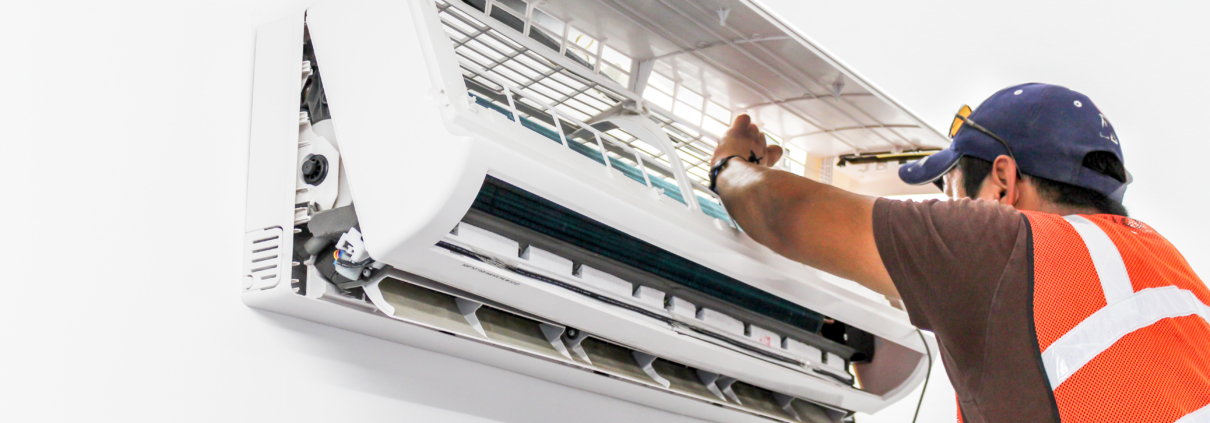What You Need to Know: Air Conditioning Without H.C.F.C. Refrigerants
A home with no air conditioning would be a nightmare amid the sweltering days of summer. And with new regulations in place, repairing an air conditioning unit could be even more costly than before. That’s because air conditioning without certain refrigerants is becoming increasingly popular, meaning the parts you need for an older system could soon be hard to find. So, what do you need to know about these upcoming changes?
New Regulations Phase Out Certain Refrigerants
Federal regulators have chosen to phase out a compound known as R-22 (or HCFC-22). It’s a refrigerant used in many air conditioning units, but evidence has shown that it’s depleting the ozone layer and harming the environment. So, in an attempt to make cooling systems more eco-friendly and efficient, manufacturers are transitioning away from using this compound.
The most common alternative to R-22 is R-410A. R-410A is a refrigerant blend that will have much less harm on the ozone. Over the years, manufacturers have slowly switched from R-22 to safer options like this. If you have a newer unit, it’s likely that you already have these new and improved refrigerants.
How Will Air Conditioning Without This Refrigerant Affect You?
In many cases, this change is good for the future of HVAC units. But it’s not so great for those who still have older air conditioning systems with these refrigerants.
You can keep using R-22 until your unit gives out, but it will be difficult to obtain if you need repairs. Companies producing and importing R-22 are now prohibited to do so. Thus, they can sell the supply they already have in stock, but once their existing supply is gone, you’ll have to search elsewhere.
As R-22 becomes less accessible, the price will go up. So, now is not the best time for your air conditioner to break because repairs are much higher than usual. Instead, it might be the ideal time to look for a newer unit.
The good news is that if you updated your unit recently, you should be in the clear! If your unit was made before 2010, it most likely uses R-22. Any units after that might’ve already switched to a more environmentally friendly option.
You can check if your unit uses R-22 or not by looking at the sticker or plaque located on the side of your unit. The refrigerant should be listed near the words “factory charge”, “system charge”, or something similar. If the numbers and letters are anything other than “R-22”, then you can breathe a sigh of relief.
When Will These Changes Take Place?
Phasing out R-22 refrigerants isn’t a new idea. But the concept of air conditioning without this refrigerant is news to many families. In 2010, production of units using R-22 were banned. But after that, R-22 could still be produced and sold for existing unit repairs.
Now, since 2020, production and import of all these refrigerants were banned, causing units to only rely on recycled or stockpiled products. From there, it’s estimated that by 2030, the refrigerants will be completely phased out. It’s a good idea to update your unit well before that day arrives.
Most families are unsure whether or not their unit uses R-22 or R-410A. If that’s the case for you, check it sooner rather than later. It’s always better to know this information before any major repairs are needed so you can be more prepared for large expenses and possibly even replacements.
Air conditioning without H.C.F.C. refrigerants might seem intimidating at first, but it can help make the world a better place. Scheduling regular maintenance for your unit can help you avoid expensive problems down the road.
Next Generation Refrigerants
Removing R-22 refrigerants is just the beginning. Due to the global warming potential from many H.C.F.C. refrigerants, including the more efficient R-410A, a new phase–down has been proposed. Now, starting sometime in the 2020s, R-410A refrigerants will slowly be phased out too.
While R-410A is safer than R-22, a pure, single component refrigerant called R-32 is now the most environmentally-friendly option. Surprisingly, it only has one-third of R-410A’s global warming potential.
Some newer units have already been introduced with this next generation refrigerant. But because of the properties of these new refrigerants, codes and standards are still being modified. Within the next few years, these safer alternatives should start becoming more mainstream.
But in the meantime, make sure your unit is as up-to-date as possible. If your system uses R-22, it might be time for a replacement. R-410A may eventually be phased out, but for now, it’s a chlorine-free and energy-efficient option that is a great improvement from other H.C.F.C. refrigerants.
If your cooling system needs an update or repair, don’t wait to have it looked at. Foster Air Heating & Cooling is here to help with all your HVAC needs, whether you need to schedule maintenance or replace your entire unit. Contact us today for a free, no-obligation quote!



